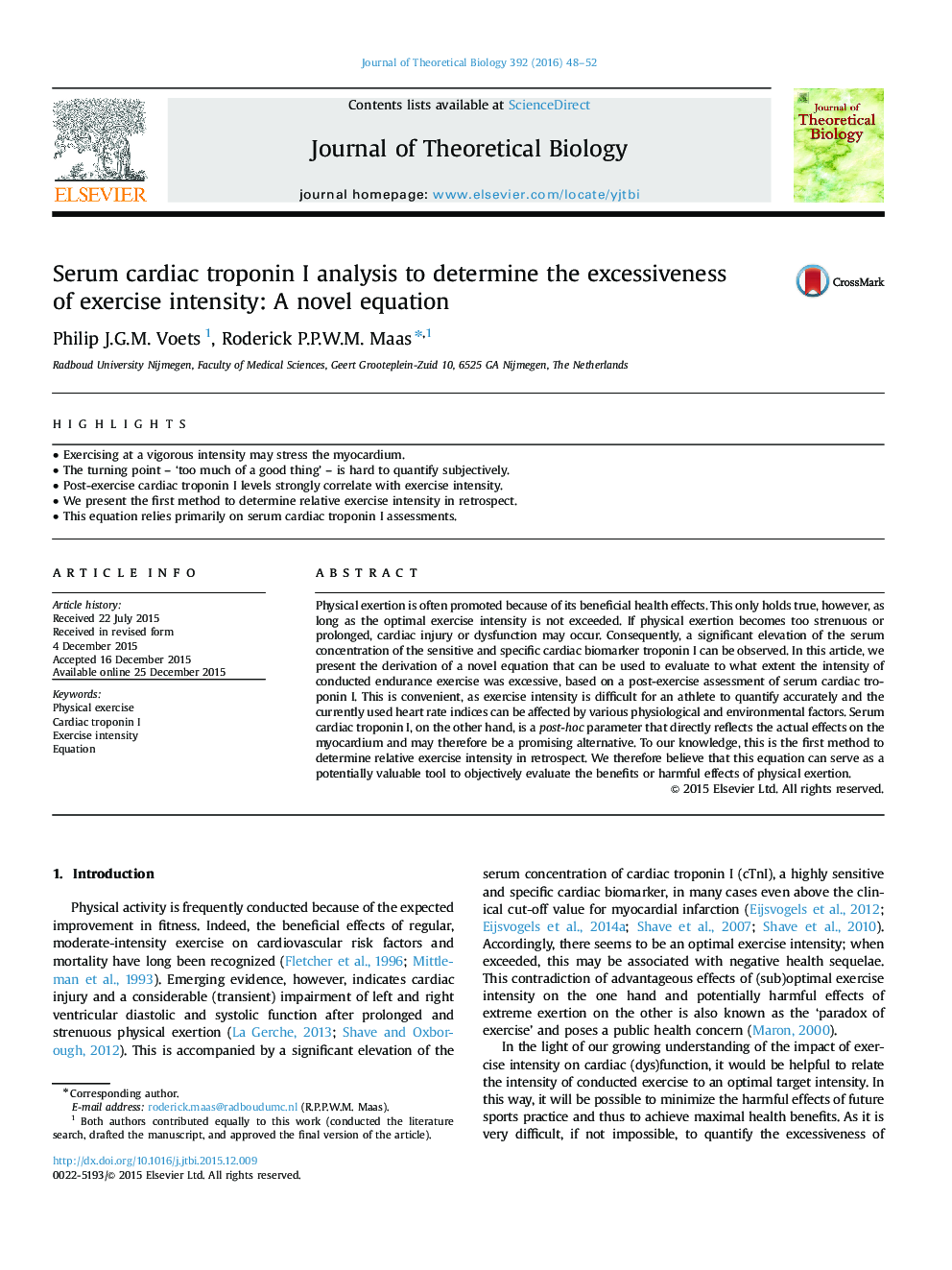| Article ID | Journal | Published Year | Pages | File Type |
|---|---|---|---|---|
| 4495910 | Journal of Theoretical Biology | 2016 | 5 Pages |
•Exercising at a vigorous intensity may stress the myocardium.•The turning point – ‘too much of a good thing’ – is hard to quantify subjectively.•Post-exercise cardiac troponin I levels strongly correlate with exercise intensity.•We present the first method to determine relative exercise intensity in retrospect.•This equation relies primarily on serum cardiac troponin I assessments.
Physical exertion is often promoted because of its beneficial health effects. This only holds true, however, as long as the optimal exercise intensity is not exceeded. If physical exertion becomes too strenuous or prolonged, cardiac injury or dysfunction may occur. Consequently, a significant elevation of the serum concentration of the sensitive and specific cardiac biomarker troponin I can be observed. In this article, we present the derivation of a novel equation that can be used to evaluate to what extent the intensity of conducted endurance exercise was excessive, based on a post-exercise assessment of serum cardiac troponin I. This is convenient, as exercise intensity is difficult for an athlete to quantify accurately and the currently used heart rate indices can be affected by various physiological and environmental factors. Serum cardiac troponin I, on the other hand, is a post-hoc parameter that directly reflects the actual effects on the myocardium and may therefore be a promising alternative. To our knowledge, this is the first method to determine relative exercise intensity in retrospect. We therefore believe that this equation can serve as a potentially valuable tool to objectively evaluate the benefits or harmful effects of physical exertion.
